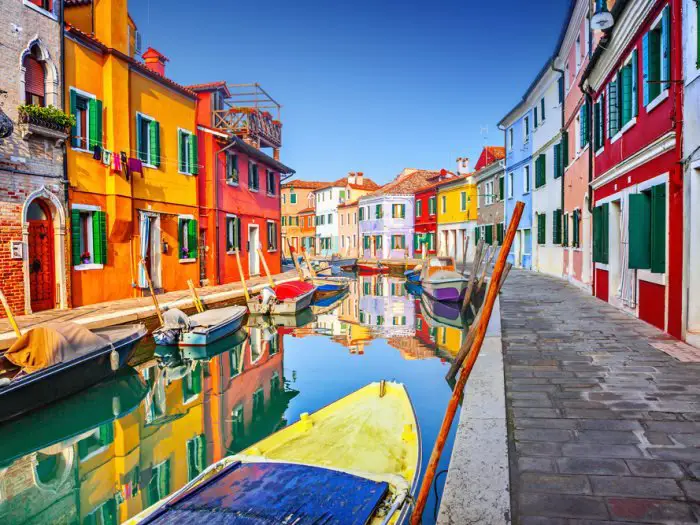There are about Differences Between a Tourist and Traveler, Exploring the world can mean different things to different people. Some see it as ticking destinations off a list, while others seek deep cultural immersion. This article dives into the differences between being a tourist and a traveler, offering insights into how mindset shapes experience. What are the Differences Between a Tourist and Traveler? and how embracing a traveler’s mindset can transform your journeys.
Differences Between a Tourist and Traveler

Differences Between a Tourist and Traveler, Tourists often view travel as an escape from routine, primarily for rest and entertainment. Their focus is on enjoying famous attractions and checking off major destinations. Travelers, however, see the journey as an opportunity for growth, education, and human connection. Their aim is to experience life through a different cultural lens and challenge their worldview.
Itinerary vs. Spontaneity
Tourists usually stick to a fixed itinerary with pre-booked tours and activities. Their schedules are tight to cover as much ground as possible in a limited timeframe. Travelers prefer a more spontaneous approach. They might plan key stops but leave space for exploration and unexpected discoveries that emerge from conversations or chance encounters.
Seeking the Famous vs. the Forgotten
While tourists prioritize iconic landmarks like the Eiffel Tower or the Great Wall of China, travelers often veer off the beaten path. Differences Between a Tourist and Traveler, They’re drawn to overlooked neighborhoods, local hangouts, or natural sites untouched by mass tourism. This approach often leads to more authentic, memorable experiences.
readImmigration to New Zealand in 2025
Hotel Comfort vs. Local Living
Tourists often preferand Differences Between a Tourist and Traveler
Chain hotels with familiar service.
All-inclusive resorts.
Privacy and amenities over authenticity.
Travelers usually go for:
Local homestays or guesthouses.
Hostels that encourage meeting others.
Staying in local neighborhoods for immersion.
By choosing local accommodations, travelers gain deeper cultural insights and forge real connections.
Observers vs. Participants
Tourists tend to watch from a distance, they might attend a traditional dance performance or dine at a themed restaurant. Differences Between a Tourist and Traveler, Travelers seek participation. They learn to cook local dishes, volunteer with community programs, or celebrate traditional holidays with local families. This engagement fosters a deeper understanding and appreciation of the host culture.
Guided Tours vs. Personal Exploration
Tourists might know Differences Between a Tourist and Traveler
Join hop-on hop-off bus tours.
Rely on travel agencies or guidebooks.
Follow group leaders and stick to schedules
Travelers tend to:
Use maps or apps to explore solo.
Ask locals for suggestions.
Enjoy discovering unexpected places.
Independent exploration brings surprises and personal stories that structured tours often lack.
Cultural Curiosity Levels
Tourists may enjoy aspects of local culture, especially food, music, and crafts, but often stay within a comfort zone. Travelers go deeper. They ask questions, visit historical sites beyond the mainstream, and reflect on cultural differences without judgment. For them, travel is as much about internal learning as it is about external sights.
Quick Stops vs. Long Stays
Tourists may visit many cities within a short trip, often spending only a day or two in each location. Travelers prefer slow travel. They spend weeks in one region, allowing for real interaction with locals, understanding daily routines, and appreciating small cultural nuances. This depth over breadth approach enriches the journey.
Shopping for Souvenirs vs. Collecting Stories
Tourist-style keepsakes include Differences Between a Tourist and Traveler:
Magnets, t-shirts, mugs.
Branded merchandise from landmarks.
Duty-free goods at the airport.
Traveler memories are built through:
Conversations with strangers.
Shared meals with local families.
Learning a few words in the native language.
For travelers, the most cherished souvenirs are intangible: stories, emotions, and life lessons.
Surface-Level Experience vs. Deep Engagement
Tourists may enjoy a curated version of the destination, often shielded from political, social, or economic realities. Travelers delve deeper. They engage in conversations about local issues, explore beyond the tourist zones, and try to understand the complexities of a place. This leads to more meaningful and transformative travel experiences.
Social Media vs. Personal Growth
Tourists often prioritize Instagram-worthy photos and viral content. Their travel narrative is shaped by likes and followers. Travelers focus on personal fulfillment. They may document their journey through journals, private blogs, or simply through memory. The value lies not in showing others, but in personal enrichment.
Relying on Reviews vs. Trusting Locals
Tourists usually find Differences Between a Tourist and Traveler:
Check TripAdvisor or Google Reviews.
Choose places ranked “Top 10.”
Avoid spots with no online presence.
Travelers often:
Ask for directions or food tips on the street.
Trust recommendations from shop owners or drivers.
Discover places not mentioned online.
This approach leads to unexpected delights and authentic interactions.
Time Constraints vs. Open Horizons
Tourists often travel with limited vacation days, squeezing in as much as possible. Travelers, especially digital nomads or gap year explorers, may have no set return date. This freedom allows for a slower, more immersive, and flexible journey.
Comfort Zone vs. Cultural Challenge
Tourists stick to what’s familiar: international chains, English-speaking guides, and mainstream attractions. Travelers push their boundaries by eating unfamiliar foods, learning local etiquette, and sometimes getting lost on purpose. These challenges become defining memories of the trip.
Which One Are You?
Differences Between a Tourist and Traveler, Ultimately, the line between tourist and traveler isn’t rigid. Many people switch roles depending on the destination, time constraints, or travel goals. The key is intention: are you visiting a place just to see it, or to truly know it? Embracing a traveler’s mindset, even on short trips, can lead to richer, more memorable experiences.
In the end of Differences Between a Tourist and Traveler , we know both of tourist or traveler was important, but there are maney differences






No comment